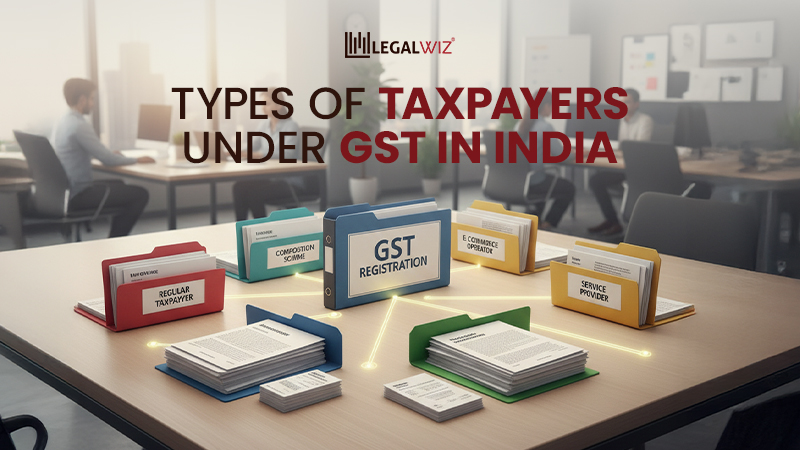GST Slabs 2025: What Every Buyer and Business Should Know
GST Slabs 2025 are here, and they’re shaking up shopping carts and ledgers alike! Whether you’re a buyer trying to make sense of your bill or a business juggling invoices, knowing the right slab is no longer optional. Miss it, and your GST return filing could turn into a headache of epic proportions. Let’s break down the slabs, so you pay (and claim) exactly what you should, without the drama.
Why should you care?
- Master your spending: Knowing which products fall under which tax slab lets you hack your grocery and home budgets. Yep, you can shop like a pro.
- Small biz, big impact: Running a startup or small business? Time to tweak your pricing, invoices, and tax plans, or get ready for a pricing headache.
- Financial finesse: Whether you’re crunching numbers as an accountant or just a savvy spender, grasping the GST game means no more tax-time panic.
- Smart consumer moves: Spot the stuff that’s tax-free, low-taxed, or taxed at full force, and make your dollars work harder for you.
Forget memorizing dry rates. It’s about unlocking the secrets behind those tax slabs, spotting the patterns, and making choices that benefit you, whether you’re buying, selling, or doing your taxes like a champ. By the end of this, the 2025 GST update won’t feel like a riddle. It’ll be your personal guide to smarter financial moves.
1. Why Did GST Slabs Change in 2025?
Every few years, the government tweaks GST rates. But it’s not random; it’s to make the system fairer and more practical. Here’s why the 2025 changes happened:
- Cost of living changes: Prices of goods and services go up over time. GST rates are updated to match these changes so the system stays balanced.
- Revenue needs: The government needs money to run schools, hospitals, roads, and other services. Adjusting GST helps collect the right amount without putting too much pressure on essential items.
- Simpler compliance: Some items were hard to classify or taxed inconsistently. The new slabs aim to make it easier for businesses to file taxes correctly.
- Protecting essentials: Basic items like vegetables, milk, and medicines remain tax-free or low-taxed to keep them affordable.
Why it matters to you:
Understanding the reasons behind the changes shows that GST isn’t just confusing rules. It’s a system designed to:
- Be fair to everyone
- Keep everyday essentials affordable
- Ensure businesses and consumers know what to expect
With this in mind, the next step is to see how the new slabs actually work and what items fall under each category.
2. Breaking Down the New Slabs – What’s Taxed and What’s Not
The 2025 GST slabs are now easier to understand, and knowing which items fall under which category helps you plan your spending or business pricing. Here’s a breakdown:
| GST Rate | Current Slabs (Before 22 Sept 2025) | New Slabs (Effective 22 Sept 2025) | Examples |
| 0% (Exempt) | Essential daily needs | Essentials + personal health & life insurance, exercise books, maps & charts | Fresh fruits, vegetables, milk, bread, notebooks, and health insurance |
| 5% | Common goods | Packaged food, footwear, medicines, small household items, and commonly used products | Packaged food, soaps, shoes, small household items |
| 12% | Processed food & mid-range items | Removed in new slabs (merged into 18% or 5%) | Butter, ghee, nuts, fruit juices, frozen meat |
| 18% | Services & standard goods | Restaurant services, telecom, financial services, electronics & daily-use appliances, motorcycles <350cc, cars <1200cc | Restaurants, banks, TVs, laptops, washing machines, and small cars |
| 28% | Electronics & high-end goods | Replaced by a 40% slab | TVs, refrigerators, small cars & bikes, cement, paints, luxury/premium items, tobacco |
| 40% (New) | N/A | Luxury & sin goods | High-end cars, tobacco products |
Note: For a detailed GST rate list, please check out our blog on the 56th GST Council Meeting, and you can also download the PDF version of the new GST rate list.
Key Takeaways of 2025 GST Reform
- Fewer GST rates simplify the system and reduce confusion.
- Daily-use items are taxed at a lower rate; luxury and sin goods are taxed at a higher rate.
- Easier online filing for businesses and individuals.
Why it matters:
- For consumers: You can spot which items are cheaper and which cost a little extra due to taxes.
- For small businesses: Helps in setting correct prices, planning invoices, and avoiding mistakes.
- For anyone filing taxes: Clear knowledge prevents errors and makes calculations easier.
By understanding these slabs, you’ll know exactly where your money goes and how to adjust spending or business decisions smartly.
3. Real-World Impact – How The New GST Changes Affect You (And Your Wallet)
GST isn’t just a number on your bill; it changes what you pay, how businesses price items, and how finance teams plan and report taxes. Understanding the new slabs helps you make smarter decisions, avoid surprises, and even save money. Let’s see how it plays out in real life.
For Consumers
GST affects everyday purchases, from groceries to electronics. Here’s how:
Example 1: Grocery Shopping
- 1 kg of ghee: ₹500
- Previously under 12% slab → GST = ₹60 → Total = ₹560
- Now under 5% slab → GST = ₹25 → Total = ₹525
Impact: A small increase may seem minor, but over a month, buying 5–10 such items adds up. Families can plan budgets better by knowing which products now cost more due to GST.
Example 2: Electronics Shopping
- TV priced at ₹30,000
- Previously 28% → GST = ₹8,400 → Total = ₹38,400
- Now 18% → GST = ₹5,400 → Total = ₹35,400
Impact: Some electronics are now cheaper, giving consumers an opportunity to upgrade gadgets without overspending.
Example 3: Luxury Spending
- Premium car priced ₹20,00,000 → GST 40% = ₹8,00,000
Impact: High taxes on luxury items encourage careful planning for big-ticket purchases and show how GST policies affect discretionary spending.
For Small Businesses
GST changes influence pricing, cash flow, and inventory decisions:
Example: Electronics Store Selling Laptops
- Laptop price: ₹50,000
- Old GST 28% → ₹14,000 → Total ₹64,000
- New GST 18% → ₹9,000 → Total ₹59,000
Impact: Businesses can reduce prices to attract customers or maintain margins, but must update invoices, stock records, and pricing systems. Mismanagement can lead to lost revenue or compliance issues.
Example: Food & Grocery Retailer
- Processed food worth ₹10,000
- Old GST 12% → ₹1,200 → Total ₹11,200
- Now merged into 5% → ₹500 → Total ₹10,500
Impact: Small businesses must be careful while billing; a higher tax on some items could upset customers if not communicated properly. Planning promotions or bulk purchases becomes important to maintain loyalty.
For Finance Professionals
Finance teams have to adjust reporting, auditing, and advisory services:
- Tax filing: With merged slabs, returns are simpler, but every item must be correctly categorized to avoid penalties.
- Client advisory: Professionals guide businesses on updated GST rates, helping them price products accurately, claim input credits, and maintain compliance.
- Cash flow management: Sudden GST changes can affect the monthly cash outflow. For example, businesses paying higher tax on processed food need to ensure sufficient liquidity.
Takeaway:
GST affects everyone: your shopping, business pricing, and financial planning. Understanding these real-life implications helps:
- Consumers plan budgets and prioritize purchases.
- Small businesses adjust pricing, stock, and billing without losing revenue.
- Finance professionals ensure smooth compliance and accurate reporting.
By connecting numbers to everyday spending, you can see GST isn’t just abstract rules, it’s a system that directly shapes how money flows in households and businesses alike.
4. Case Studies & Examples – GST in Action
GST isn’t just numbers on paper—it’s a part of daily life for families and businesses across India. Let’s look at a couple of relatable examples:
The Local Bakery:
A small bakery selling cakes and pastries have to use multiple GST slabs—5%, 12%, and 18%—depending on the product. By keeping a close eye on GST for ingredients and final product prices, they adjust promotions and pricing without losing their margins.
- Result:
- Savings on costs
- Competitive pricing for customers
- Loyal repeat buyers
- Lesson: Understanding GST transforms small operational tweaks into real profit.
E-commerce Seller:
An online handicraft store deals with different GST rates on various items. By restructuring product bundles, promoting items with lower GST, and claiming input tax credit wherever possible, the seller manages cash flow efficiently while keeping customers happy.
- Result:
- Improved cash flow
- Smoother operations
- Happy, satisfied customers
- Lesson: Mastering GST intricacies directly boosts revenue and customer trust.
Takeaway:
GST isn’t some distant tax law—it impacts everything from a slice of cake to an online order. When you plan around it strategically, it stops being a headache and becomes a tool for saving, scaling, and staying competitive.
| Get to know if you’re eligible for GST registration or not: Understanding Eligibility for GST Registration |
5. Stay Ahead, Not Behind With LegalWiz
GST Slabs 2025 aren’t just numbers on paper—they decide how much you pay at the counter and how your books add up. For buyers, it’s about decoding the bill; for businesses, it’s about getting online GST registration right and keeping GST return filing smooth. GST and tax rules don’t wait around, so why should your planning? Staying sharp isn’t just smart; it’s survival mode for your wallet and biz.
- Keep track of your finances often: Tiny tweaks in spending, pricing, or investments based on current GST slabs can snowball into big wins.
- Call in the experts: A trusty CA or tax wizard can keep you squeaky clean with compliance, optimize your invoices, and sniff out sneaky savings.
- Stick to trusted sources: Keep your eyes on official updates and savvy insights. LegalWiz is like your tax GPS, steering you clear of nasty last-minute curveballs.
This isn’t about freak-outs; it’s about boss-level empowerment. Nail the right moves, take charge, and swagger through tax season with confidence instead of chaos. LegalWiz’s got your back to decode the rules and turn them into action, so you’re always cruising ahead, never stuck in the tax traffic jam.
Conclusion – Tax Smarter, Not Harder
Filing GST return doesn’t have to feel like a maze you can’t escape. The key is understanding the essentials, keeping your records organized, and tackling tasks before they become urgent. Tracking deadlines, checking returns carefully, and claiming eligible credits can save both money and stress.
You don’t need to memorize every rate or rule—what matters is knowing where to find the right information and when to ask for help. Platforms like LegalWiz put expert guidance and updates within easy reach, helping you navigate GST with confidence.
Over time, these small steps add up: fewer mistakes, fewer penalties, and a clearer view of your business finances. When you plan ahead, use the right tools, and stay informed, GST stops being a headache and becomes just another part of running your business smoothly.
With the right approach, staying tax-smart is not only possible—it’s straightforward, manageable, and even empowering.
Frequently Asked Questions
What are the new GST slab rates in India?
There are now just three slabs: 5%, 18%, and 40%. The 40% rate is reserved for luxury goods like big cars, tobacco, pan masala, and fizzy drinks.
Which items are now taxed at 5%?
Everyday essentials get relief! Groceries, food items, and basic household stuff now come under the 5% GST rate.
What does the 40% GST rate apply to?
This is the luxury corner. Tobacco, pan masala, soft drinks, and high-end cars fall here—things you splurge on, but with a heavy tax tag.
How do these changes affect my personal expenses?
Daily expenses get lighter since essentials are cheaper. But luxuries will burn a bigger hole in your pocket.
How can businesses adapt to the new GST structure?
Update billing software, apply the correct HSN/SAC codes, and take advice from a tax expert. A little prep now avoids compliance chaos later.
Where can I find the full list of updated GST rates?
Head to the Ministry of Finance website. They’ve published the official list with all the details—straight from the source.

Sapna Mane
Sapna Mane is a skilled content writer at LegalWiz.in with years of cross-industry experience and a flair for turning legal, tax, and compliance chaos into clear, scroll-stopping content. She makes sense of India’s ever-changing rules—so you don’t have to Google everything twice.







